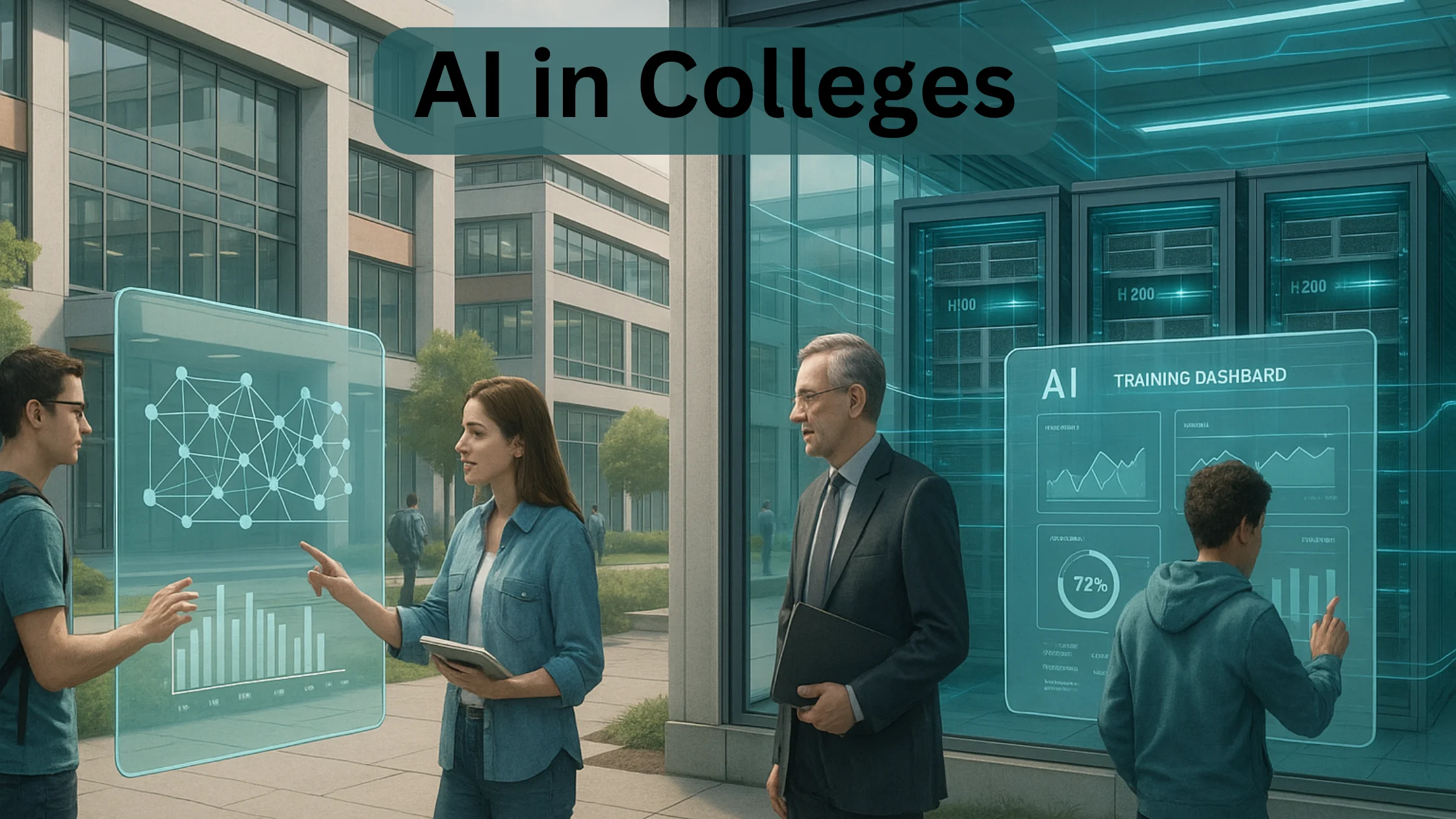

Writing About AI
Uvation
Reen Singh is an engineer and a technologist with a diverse background spanning software, hardware, aerospace, defense, and cybersecurity. As CTO at Uvation, he leverages his extensive experience to lead the company’s technological innovation and development.

Essential AI infrastructure for universities extends far beyond traditional computer labs or generic cloud services. It encompasses specialised hardware, including NVIDIA H100 and H200 GPUs, which are crucial for processing complex AI workloads. Alongside these, high-speed scalable storage and ultra-fast networking are required to handle massive datasets and ensure efficient data transfer. Furthermore, tailored software stacks are necessary to support the diverse range of AI applications and research. The overall infrastructure must also incorporate sustainable power and cooling systems due to the intensive energy demands of AI operations.
Dedicated AI infrastructure is a strategic imperative because it enables universities to remain competitive and lead in research, education, and talent acquisition. This specialised infrastructure allows institutions to train large language models, analyse vast datasets for scientific breakthroughs, and provide students with hands-on experience using industry-standard AI tools. Without it, universities risk falling behind in the rapidly evolving field of AI, hindering their ability to attract top researchers and students, and to contribute meaningfully to global AI advancements.
Investing in dedicated AI infrastructure offers several significant benefits over relying solely on generic cloud services. Firstly, it provides long-term cost efficiency, as continuous use of high-performance cloud resources can become prohibitively expensive. Secondly, it ensures data sovereignty, meaning universities retain full control and ownership of their sensitive research data. Thirdly, it significantly enhances academic competitiveness by enabling cutting-edge research and educational programmes that would be difficult or impossible with less specialised resources.
Building AI infrastructure presents several significant challenges for universities. A major hurdle is the high upfront cost associated with acquiring specialised hardware like H100 or H200 GPUs, high-speed storage, and advanced networking equipment. Beyond hardware, there’s a critical need for investment in expert staff to manage and maintain this complex infrastructure. Additionally, universities must strategically plan for hybrid cloud strategies and implement robust, sustainable power and cooling systems, which can be complex and costly endeavours.
NVIDIA H100 and H200 GPUs differ primarily in their memory capabilities and, consequently, their suitability for different research demands. The H200 offers significant memory advantages, making it ideal for processing extremely large datasets and training very complex models that require vast amounts of memory. In contrast, the H100 remains a more cost-effective option for general AI tasks and a wide range of research projects that do not require the absolute maximum memory capacity. The choice for a university depends on the specific scale and memory demands of their primary research objectives.
Beyond just hardware, effective AI infrastructure demands crucial investments in several other areas. Firstly, expert staff are essential to manage, maintain, and optimise the complex AI systems and software stacks. Secondly, universities need to develop and implement robust hybrid cloud strategies to balance on-premise resources with scalable cloud capabilities. Thirdly, significant investment is required in sustainable power and cooling systems to support the high energy consumption and heat generation associated with advanced AI hardware. Finally, tailored software stacks are vital to enable diverse AI applications and research.
Robust AI infrastructure significantly enhances a university’s educational mission by providing students with hands-on experience using real-world AI tools and technologies. This allows them to engage directly with the same specialized hardware and software used in leading industry and research environments. Such practical exposure is invaluable for nurturing the next generation of AI talent, equipping them with the skills and knowledge necessary for successful careers in a rapidly evolving field, and fostering a deeper understanding of complex AI concepts.
Universities can expect several substantial long-term benefits from investing in advanced AI infrastructure. These include the ability to drive scientific breakthroughs by enabling the analysis of massive datasets and the training of cutting-edge AI models. Furthermore, it positions them to consistently nurture and attract the next generation of top AI talent, enhancing their reputation and influence in the global research landscape. The investment also offers long-term cost efficiency compared to continuous reliance on external cloud services, and ensures data sovereignty and security for sensitive research.
We are writing frequenly. Don’t miss that.
